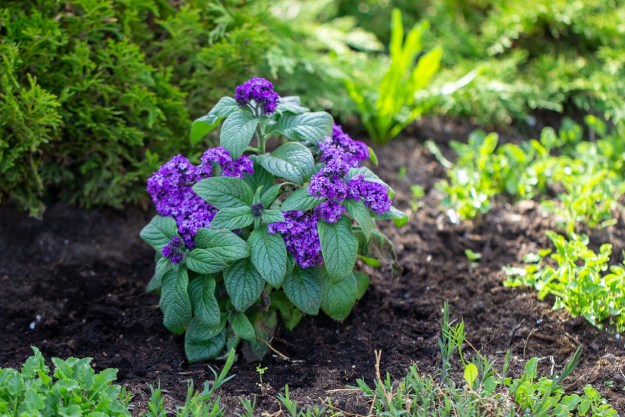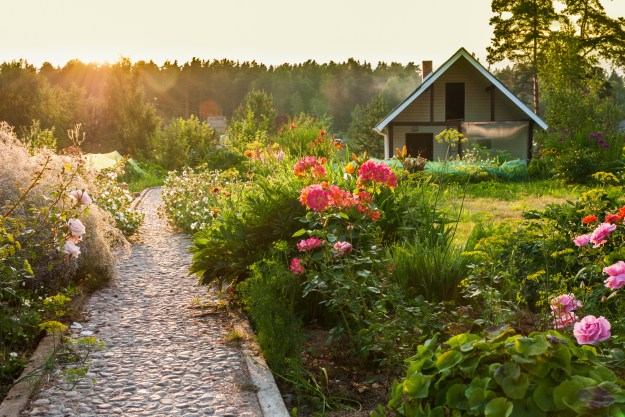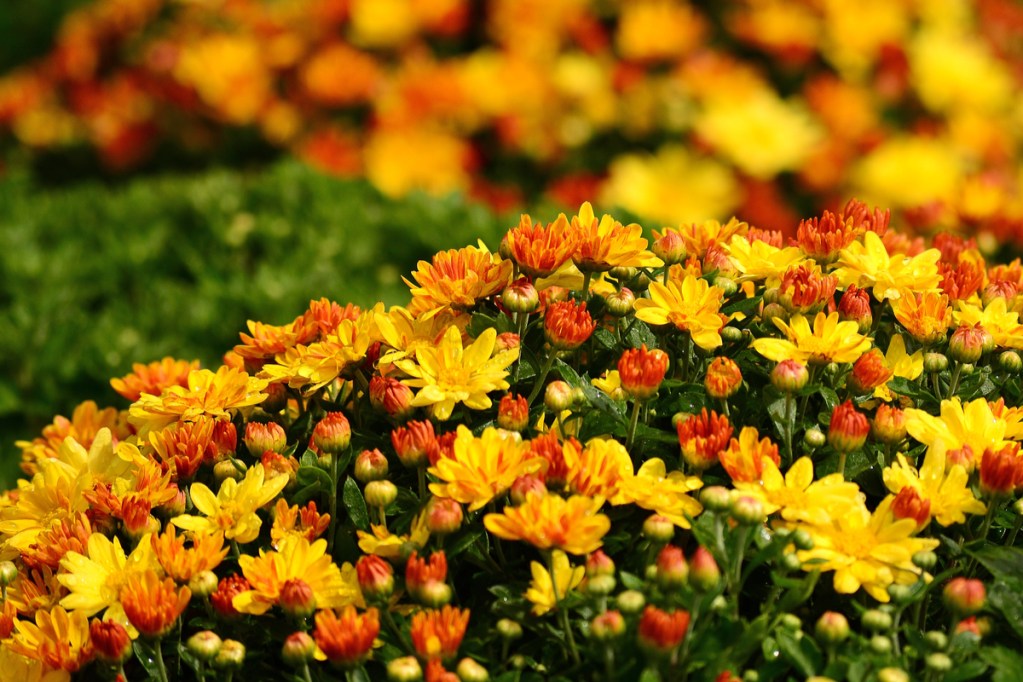
Come early fall, you’ll find beautiful mums in virtually every color lining nursery display tables. The garden mum, or chrysanthemum, is a universally beloved autumn flower, and luckily, it’s easy to find. Of course, there are so many different blooms to choose from, many coming in whimsical, Dr. Seuss-esque shapes.
With so many options, it can be overwhelming to find just the right one for cozying up your garden — even if you’re only keeping it for the fall season. If you’re wondering which mum best suits your landscape, keep reading to learn about the different types of autumn garden mums.

How to care for mums
Most fall mums are relatively easy to care for. Before we dive into different mum flower types, here’s a quick rundown of factors to consider as you figure out how to provide yours with the best care possible. Though they’re often grown as potted annual plants, chrysanthemums can survive all year long, especially if you live in zones four through nine.
- Light: Where should you situate your mums in the garden? Mums usually only need six hours of light of day, but the more light you can give your plant, the greater chance it will have at opening up its flowers. (Just don’t let it wither in direct light.) Plants with tight buds will appreciate areas with full sun — you don’t want to leave unopened flowers indoors. If you have a plant that has already bloomed, consider leaving it in partial shade.
- Water: Mums appreciate a good drink of water, sometimes even on a daily basis. Your soil should be moist but not soggy. Luckily, mums aren’t particularly picky about soil, so you only need a well-draining growing medium. To optimize water retention, mulch your soil to help your mum keep its roots hydrated. Also, water from the bottom to give the roots as much water as possible.
- Fertilizer: You only need to fertilize mums every week or two with an all-purpose liquid fertilizer throughout the growing season until they bloom. Alternatively, you can use slow-release flower food. If you get a plant with buds just about to open, you won’t need to fertilize your plant.
- Temperature: Most mums aren’t freeze hardy, preferring a temperature range between 55 to 65°F. If you want to plant mums that will last beyond autumn, put them in the ground early in the fall so that they can establish roots before it gets too cold.
Do mums do better in the ground or in containers?
Mums can thrive in both the ground and in containers. When you first get them from the nursery, you’ll want to move them to a bigger space, as the flowers are often tightly packed inside grow pots. Whether that’s a bigger container or a whole flower bed is up to you.
If you live in a warm area, your mum will have a good chance of surviving the late fall and winter outdoors. If you live in a cold region, you might want to consider using a pot to overwinter your plant indoors. As always, check your plant’s specific hardiness zone range, which should be labeled on the container. Your nursery will likely also indicate whether a plant is a perennial or an annual.
Now, without further ado, let’s get into the different types of chrysanthemum flowers out there.

1. Incurve mums
Incurve mums feature thick florets that curve inwards. When considering incurve chrysanthemums, you can, of course, get more granular. There are irregular incurve mums, which loosely close to the center, and then there are regular incurve mums, which have a tighter, more spherical shape — the intermediate incurve falls somewhere in between these two. Incurve mums are generally short and can have blooms between 4 and 8 inches wide. They come in many colors, including yellow, purple, and orange.

2. Reflex mums
Another common variety of mums you might find in floral arrangements is the reflex mum. Coming in many traditional fall colors such as crimson, orange, and yellow, reflex mums are more or less the opposite of incurve mums — they curve out and downward. Their growth pattern gives them a feathery appearance that can add a subtly fluffy texture to your whimsical garden landscape. Keep in mind that their stalks can grow tall, measuring around 3 to 4 feet in height.
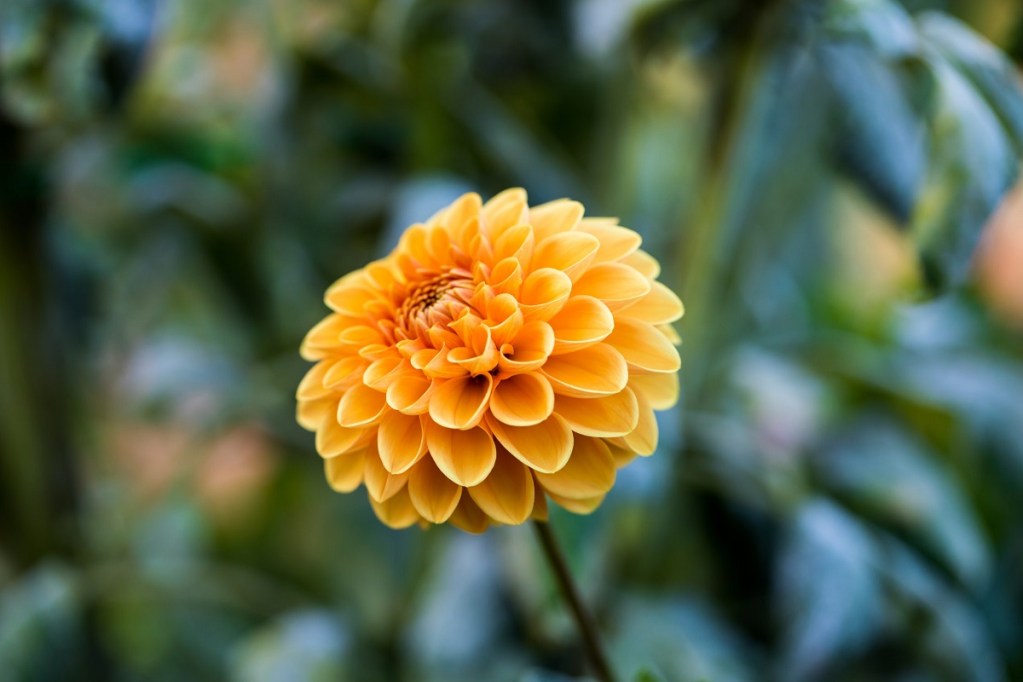
3. Pompom mums
Whereas regular incurve mums have petals that curve inwards, pompom mums, or button mums, have petals that grow around evenly, much like a full dahlia bloom. As their name suggests, these adorable flowers resemble cheerleader pompoms. The spheres are typically 1 to 4 inches wide, and the flower stalks often remain around 18 inches tall. You can usually find them in vibrant hues such as yellow and pink.

4. Spoon mums
Spoon mums may initially look like any old mum, but you’ll appreciate their uniqueness once you zoom out. At the ends of their petals, you’ll see spoon-like formations that give them extra visual flair. They reach between 24 to 26 inches tall and appreciate about 16 inches of space apart in flower beds. Though beautiful, these aren’t the most cold hardy varieties, so you’ll likely want to overwinter them inside if you aren’t living in zones five through nine. Their lovely colors include white, yellow, orange, lavender, and pink — they’re perfect for an elegant floral arrangement.
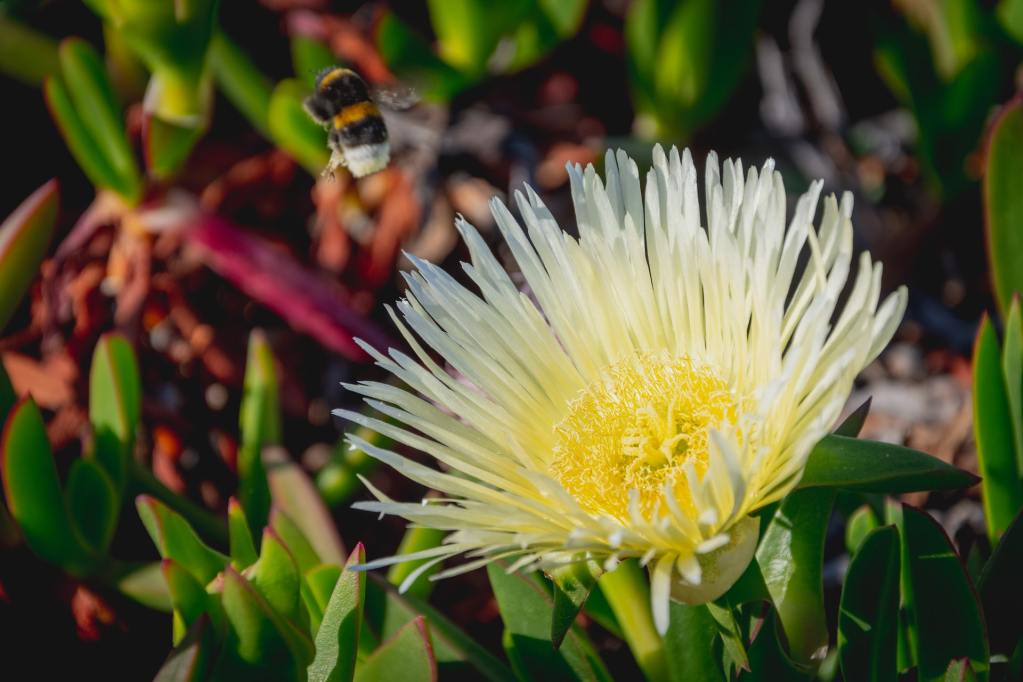
5. Spider mums
Looking for a showy yet delicate variety? Try the spider mum. Often found in reds and pinks, spider mums feature extra thin, tubular petals that expand out like fireworks, or spider legs, as their name suggests. They’re big, featuring flower heads 6 inches wide and stalks 1 to 3 feet tall. Because the flowers tend to be big, consider supporting the stalks with trellises or stakes. Spider mums are also cold sensitive, especially if you’re not living in zones six through nine.

6. Single and semi-double mums
Single and semi-double mums are your mums that often get mixed up with daisies, featuring one or two rounds of petals around a tight center. (Three rounds make it a semi-double mum.) Perfect for borders or fences, they grow around 1 to 3 feet tall. Their striking hues include red, pink, and apricot.
Now that you know all about the most common types of mums, go forth and pick out a variety with just the right texture and color for your autumn garden. With a little tender loving care, you may even be able to keep these lovely blooms as perennials, not just decorative flowers that eventually die.
Editors' Recommendations
- What should you do if you find a snake in your garden?
- 7 gorgeous types of roses every gardener should know
- Goth style isn’t just a fashion trend – it’s taking over 2024 gardens, too
- Scaevola: How to grow these uniquely shaped fan flowers for a stunning summer garden
- What is a chaos garden, and why should you start one this spring?


